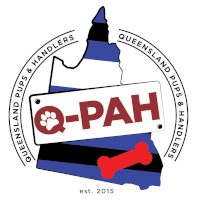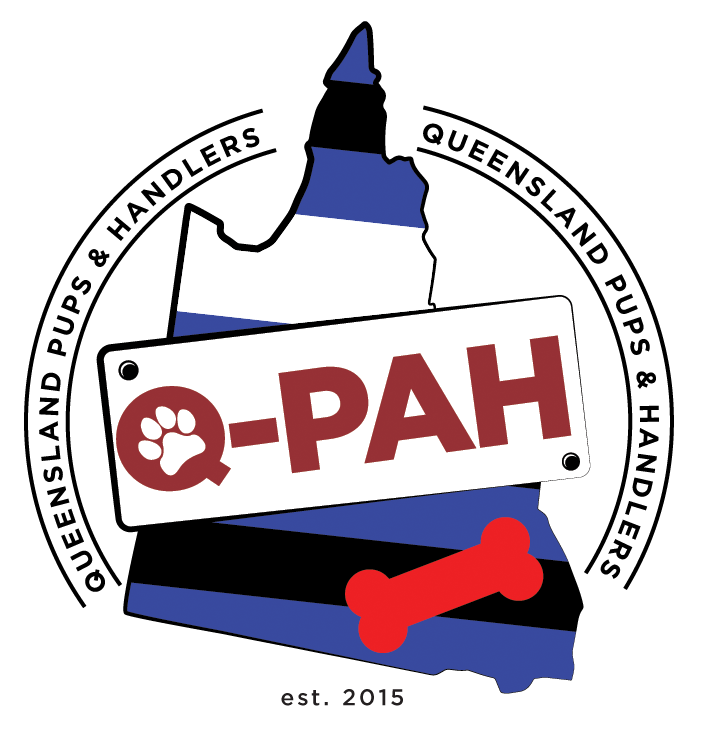1 Interpretation
(1) In these rules—
Act means the Associations Incorporation Act 1981.
present—
(a) at a management committee meeting, see rule 23(6); or
(b) at a Q-PAH Council meeting, see rule 23a(6); or
(c) at a general meeting, see rule 37(2).
(2) A word or expression that is not defined in these model rules, but is defined in the Act has, if the context permits, the meaning given by the Act.
2 Name
The name of the incorporated association is QUEENSLAND PUPS AND HANDLERS INC (the association).
3 Objects
The objects of the association are:
(1) To provide an environment for all members interested in the pup and Handler lifestyle,
(2) Promoting an interest in Kink, Leather, Fetish, and BDSM lifestyles in both an educational and social atmosphere through community activity.
(3) To provide an inclusive safe space for members to explore the pup and Handler lifestyle.
(4) To promote fellowship and interchange ideas amongst club members.
(5) To promote good public relations while encouraging a general public acceptance and understanding of the pup and Handler lifestyle.
(6) To conduct events throughout the year, including an annual Queensland Pup and Handler Competition (QPHC).
(7) To promote interest in the preservation of our lifestyle and heritage (pup and Handler) and the various aspects that may include Leather, kink, fetish and BDSM and the sustainability of the pup and Handler environment.
(8) To liaise with other similar groups in the community and engage in activities which assist in achieving these objects.
4 Powers
(1) The association has the powers of an individual.
(2) The association may, for example—
(a) enter into contracts; and
(b) acquire, hold, deal with and dispose of property; and
(c) make charges for services and facilities it supplies; and
(d) do other things necessary or convenient to be done in carrying out its affairs.
(3) The association may take over the funds and other assets and liabilities of the present unincorporated association known as the Queensland Pups and Handlers (the unincorporated association).
(4) The association may also issue secured and unsecured notes, debentures and debenture stock for the association.
5 Classes of members
(1) The membership of the association consists of an unlimited number of ordinary members, and any of the following classes of members, providing that:
(a) All members must support the objects of the association.
(b) All members of the association, with the exception of Corporate Members, must be 18 years of age or older.
(2) Corporate
(a) Corporate Members shall be an incorporated business, association or person with as Australian Business Number (ABN).
(b) This class of membership will have no voting rights, but the Management Committee may grant Member privileges such as discounted entry fees to club events where appropriate.
(3) Life
(a) The Management Committee recommends that a Life Membership be granted.
(b) This recommendation, presented as a special resolution, must be ratified at a General Meeting.
(c) Life memberships shall not attract a membership fee.
(d) Life memberships may be terminated by the procedures outlined in Section 10a.
(4) Associate
(5) Foundation members, defined as: any member on the role of members who
(a) gained membership under the provisions of Section 6,
(b) who has a number on the membership roll of between 1 and 30 inclusive, and
(c) whose membership has never been terminated under the provisions of Section 10(3) other than for non-payment of dues (10(3)(c)).
6 Automatic membership
(1) A person who, on the day the association is incorporated, was a member of the unincorporated association and who, on or before a day fixed by the management committee, agrees in writing to become a member of the incorporated association, must be admitted by the management committee—
(a) to the equivalent class of membership of the association as the member held in the unincorporated association; or
(b) if there is no equivalent class of membership—as an ordinary member.
7 New membership
(1) An applicant for membership of the association must be proposed by 1 member of the association (the proposer) and seconded by another member (the seconder).
(2) An application for membership must be—
(a) in writing; and
(b) signed by the applicant and the applicants proposer and seconder; and
(c) in the form decided by the management committee.
8 Membership fees
(1) The membership fee for each ordinary membership and for each other class of membership (if any)—
(a) is the amount decided by the members from time to time at a general meeting; and
(b) is payable when, and in the way, the management committee decides.
(2) A member of the incorporated association who, before becoming a member, has paid the members annual subscription for membership of the unincorporated association on or before a day fixed by the management committee, is not liable to pay a further amount of annual subscription for the period before the day fixed by the management committee as the day on which the next annual subscription is payable.
9 Admission and rejection of new members
(1) The management committee must consider an application for membership at the next committee meeting held after it receives—
(a) the application for membership; and
(b) the appropriate membership fee for the application.
(2) The management committee must ensure that, as soon as possible after the person applies to become a member of the association, and before the management committee considers the persons application, the person is advised—
(a) whether or not the association has public liability insurance; and
(b) if the association has public liability insurance—the amount of the insurance.
(3) The management committee must decide at the meeting whether to accept or reject the application.
(4) If a majority of the members of the management committee present at the meeting vote to accept the applicant as a member, the applicant must be accepted as a member for the class of membership applied for.
(5) The secretary of the association must, as soon as practicable after the management committee decides to accept or reject an application, give the applicant a written notice of the decision.
10 When membership ends
(1) A member may resign from the association by giving a written notice of resignation to the secretary.
(2) The resignation takes effect at—
(a) the time the notice is received by the secretary; or
(b) if a later time is stated in the notice—the later time.
(3) The Q-PAH Council may terminate a member's membership other than a Life Membership if the member—
(a) is convicted of an indictable offence; or
(b) does not comply with any of the provisions of these rules; or
(c) has membership fees in arrears for at least 2 months; or
(d) conducts himself or herself in a way considered to be injurious or prejudicial to the character or interests of the association.
(4) The management committee must refer all membership application rejections and membership terminations to the Q-PAH Council within 48 hours. In their referral, the management committee must provide all reasons why a membership should be refused or terminated and provide the council with all evidence as to why the management committee feels that rejection of application or termination of membership is the only option.
(5) The Q-PAH Council must meet to discuss the membership rejection or termination within 8 weeks of receipt of all evidence and supporting documents from the management committee.
(6) Before the Q-PAH Council rejects or terminates a membership, the Council must give the applicant or member a full and fair opportunity to show why the membership should not be rejected or terminated.
(7) The secretary of the Q-PAH Council must, as soon as practicable after the Council decides to accept or reject an application, give the applicant a written notice of the decision.
(8) If the Q-PAH Council rejects or terminates a membership, after providing notice to the applicant or member the Q-PAH Council secretary must also provide a copy of this notice to the management committee by writing to the secretary of the management committee.
(9) The management committee shall be bound by all decisions of the Q-PAH Council.
10a Termination of a Life Membership
(1) The Q-PAH Council and/or the Management Committee may recommend the termination of a life member's membership if the member—
(a) is convicted of an indictable offence; or
(b) does not comply with any of the provisions of these rules; or
(c) conducts himself or herself in a way considered to be injurious or prejudicial to the character or interests of the association.
(2) This recommendation, presented as a special resolution, must be ratified at a General Meeting, which must be called within one (1) month of the recommendation of the Q-PAH Council or Q-PAH Committee to terminate a Life Membership.
(3) At this meeting, the Life Member must be given a full and fair opportunity to show why their Life Membership should not be terminated prior to the special resolution being put.
(4) Either one member of the Q-PAH Council or Management Committee must be given a full and fair opportunity to show why the life membership should be terminated prior to the special resolution being put.
(5) If the members at this general meeting decide to uphold the recommendation for termination of the Life Membership, then that Life Membership ends immediately.
(6) Any person whose Life Membership has been terminated may apply to become an Ordinary Member of the club. This application will be subject to the provisions relating to new membership under rule 7, if that person had never been an Ordinary Member of the club prior to being granted Life Membership. In those cases where the person whose Life Membership has been terminated was an Ordinary Member of the club before they were granted Life Membership, they will resume being an Ordinary Member and will be subject all requirements relating to membership of the club.
(7) A person who has had their Life Membership terminated is not subject to any of the prohibitions as set out rule 12(6)
(8) No further appeal process against the termination of a Life Membership applies.
11 Appeal against rejection or termination of membership
(1) A person whose application for membership has been rejected or whose membership has been terminated by a decision of the Q-PAH Council, may give the secretary written notice of the person's intention to appeal against the decision.
(2) A notice of intention to appeal must be given to the secretary within 1 month after the person receives written notice of the decision.
(3) The secretary must provide notice to the Q-PAH Council of any person's intention to appeal a membership termination within 14 days.
(4) The Q-PAH Council must contact the person wishing to appeal the decision to ensure the person understands their right to appeal, within 14 days of the Q-PAH Council's receipt of the notice of intention to appeal. This contact must include assisting with providing a support person for the applicant. (5) If the secretary receives a notice of intention to appeal, the secretary must, within 1 month after receiving the notice, call a general meeting to decide the appeal.
12 General meeting to decide appeal
(1) The general meeting to decide an appeal must be held within 3 months after the secretary receives the notice of intention to appeal.
(2) At the meeting, the applicant must be given a full and fair opportunity to show why the application should not be rejected or the membership should not be terminated.
(3) Also, the management committee and the members of the committee and the Q-PAH Council who rejected the application or terminated the membership must be given a full and fair opportunity to show why the application should be rejected or the membership should be terminated.
(4) An appeal must be decided by a majority vote of the members present and eligible to vote at the meeting.
(5) If a person whose application for membership has been rejected does not appeal against the decision within 1 month after receiving written notice of the decision, or the person appeals but the appeal is unsuccessful, the secretary must, as soon as practicable, refund the membership fee paid by the person.
(6) If a general meeting is requested and held, subsequent to this rule, and the members at that general meeting decide to uphold the termination or rejection of membership, then the person is prohibited from reapplying for membership for a period of three (3) years from the date of that general meeting, with no further appeal processes available during that period.
(a) If a person is terminated on the grounds as listed in either rule 10(3) (b) or (d), the person is banned from attending any association events for a period of two (2) years. After the 2 year period is completed, the person may attend events, and is permitted to reapply for membership after a further 12 month probation period.
(b) If a person applies for membership after the probation period, their membership is considered a new membership and not a continuation of their previous membership.
(7) A person whose membership has previously been rejected or terminated other than for non-payment of dues cannot appeal against rejection of a new membership application.
(8) A person whose membership has previously been rejected or terminated other than for non-payment of dues cannot appeal against a termination of membership.
13 Register of members
(1) The management committee must keep a register of members of the association.
(2) The register must include the following particulars for each member—
(a) the full name of the member;
(b) the postal or residential address of the member;
(c) the date of admission as a member;
(d) the date of death or time of resignation of the member;
(e) details about the termination or reinstatement of membership;
(f) any other particulars the management committee or the members at a general meeting decide.
(3) The register must be open for inspection by members of the association at all reasonable times.
(4) A member must contact the secretary to arrange an inspection of the register.
(5) However, the management committee may, on the application of a member of the association, withhold information about the member (other than the members full name) from the register available for inspection if the management committee has reasonable grounds for believing the disclosure of the information would put the member at risk of harm.
14 Prohibition on use of information on register of members
(1) A member of the association must not—
(a) use information obtained from the register of members of the association to contact, or send material to, another member of the association for the purpose of advertising for political, religious, charitable or commercial purposes; or
(b) disclose information obtained from the register to someone else, knowing that the information is likely to be used to contact, or send material to, another member of the association for the purpose of advertising for political, religious, charitable or commercial purposes.
(c) disclose information obtained from the register to someone else, knowing that the information is likely to be used to be used to harass, defame or otherwise cause harm to any member of the association.
(2) Subrule (1) does not apply if the use or disclosure of the information is approved by the management committee of the association.
15 Appointment or election of secretary
(1) The secretary must be an individual residing in Queensland, or in another State but not more than 65km from the Queensland border, who is—
(a) a member of the association elected by the association as secretary; or
(b) any of the following persons appointed by the management committee as secretary—
(i) a member of the association's management committee;
(ii) another member of the association;
(iii) another person.
(2) If the association has not elected an interim officer as secretary for the association before its incorporation, the members of the management committee must ensure a secretary is appointed or elected for the association within 1 month after incorporation.
(3) If a vacancy happens in the office of secretary, the members of the management committee must ensure a secretary is appointed or elected for the association within 1 month after the vacancy happens.
(4) If the management committee appoints a person mentioned in subrule (1)(b)(ii) as secretary, other than to fill a casual vacancy on the management committee, the person does not become a member of the management committee.
(5) However, if the management committee appoints a person mentioned in subrule (1)(b)(ii) as secretary to fill a casual vacancy on the management committee, the person becomes a member of the management committee.
(6) If the management committee appoints a person mentioned in subrule (1)(b)(iii) as secretary, the person does not become a member of the management committee.
(7) In this rule— casual vacancy, on a management committee, means a vacancy that happens when an elected member of the management committee resigns, dies or otherwise stops holding office.
16 Removal of secretary
(1) The management committee of the association may at any time remove a person appointed by the committee as the secretary.
(2) If the management committee removes a secretary who is a person mentioned in rule 15(1)(b)(i), the person remains a member of the management committee.
(3) If the management committee removes a secretary who is a person mentioned in rule 15(1)(b)(ii) and who has been appointed to a casual vacancy on the management committee under rule 15(5), the person remains a member of the management committee.
17 Functions of secretary
The secretary’s functions include, but are not limited to—
(a) calling meetings of the association, including preparing notices of a meeting and of the business to be conducted at the meeting in consultation with the president of the association; and
(b) keeping minutes of each meeting; and
(c) keeping copies of all correspondence and other documents relating to the association; and (d) maintaining the register of members of the association.
18 Membership of management committee
(1) The management committee of the association consists of a president, vice-president, treasurer, secretary and any General members the association members elect at a general meeting provided that the total number of voting members of the committee shall not be less than 5 and not more than 9.
(2) A member of the management committee, other than a secretary appointed by the management committee under rule 14(1)(b)(iii), must be a member of the association.
(3) Members of the management committee are to be elected at the annual general meeting of the association. Subject to rule 18, members of the management committee are to hold office for approximately 2 years.
(4) A member of the association may be appointed to a casual vacancy on the management committee under rule 20.
(5) At all times:
(a) At least one member of the committee shall be a person who identifies as a Handler, and
(b) At least one member of the committee shall be a person who identifies as a pup.
(6) Current titleholders of the association, as decided by the annual Queensland Pup and Handler Competition are invited as ex officio observers to the management committee. Observers of the management committee do not have voting rights on the committee. These titles shall consist of:
(a) QLD Pup, and
(b) QLD Handler.
18a Membership of Q-PAH Council
(1) The Q-PAH Council consists of not fewer than 3 and not more than 5 members.
(2) A member of the Q-PAH Council must be either:
(a) A Foundation Member who has not had a lapse in their membership of longer than six (6) months at any one time, or
(b) a Life Member of the association.
(3) No member of the Q-PAH Council shall be, at any time during their term, a voting member of the management committee.
(4) Members of the Q-PAH Council are to be elected at the annual general meeting of the association. Members of the Q-PAH Council are to hold office for approximately 2 years.
(5) A member of the association who meets the criteria listed in 18a(2) may be appointed to a casual vacancy on the Q-PAH Council under rule 20a. (6) The members of the Q-PAH Council shall elect a Secretary from among their number who shall call and chair meetings.
19 Electing the management committee
(1) A member of the management committee may only be elected as follows:
(a) any 2 members of the association may nominate another member (the candidate) to serve as a member of the management committee; (b) the nomination must be:
(i) in writing; and
(ii) signed by the candidate and the members who nominated him or her; and
(iii) given to the secretary at least 14 days before the annual general meeting at which the election is to be held;
(c) each member of the association present and eligible to vote at the annual general meeting may vote for 1 candidate for each vacant position on the management committee;
(d) if, at the start of the meeting, there are not enough candidates nominated, nominations may be taken from the floor of the meeting.
(2) Nominations will be called as follows:
(a) in even numbered years nominations will be called for the following positions:
(i) president;
(ii) treasurer;
(iii) up to two General members of the management committee; and
(iv) any vacancies on the committee not otherwise called for.
(b) in odd numbered years nominations will be called for the following positions:
(i) vice-president;
(ii) secretary;
(iii) up to three General members of the management committee; and
(iv) any vacancies on the committee not otherwise called for.
(3) A person may be a candidate only if the person—
(a) is an adult; and
(b) is not ineligible to be elected as a member under section 61A of the Act.
(4) A list of the candidates’ names in alphabetical order, with the names of the members who nominated each candidate, must be emailed to the financial members at least 7 days immediately
(5) If required by the management committee, balloting lists must be prepared containing the names of the candidates in alphabetical order.
(6) The management committee must ensure that, before a candidate is elected as a member of the management committee, the candidate is advised—
(a) whether or not the association has public liability insurance; and
(b) if the association has public liability insurance—the amount of the insurance.
(7) Election of General members of the management committee is by Single Transferable Vote.
19a Electing the Q-PAH Council
(1) A member of the Q-PAH Council may only be elected as follows:
(a) any 2 members of the association who are eligible to be nominated for the Q-PAH Council may nominate another eligible member (the candidate) to serve as a member of the Q-PAH Council;
(b) the nomination must be:
(i) in writing; and
(ii) signed by the candidate and the members who nominated him or her; and
(iii) given to the secretary at least 14 days before the annual general meeting at which the election is to be held;
(c) Each member of the association who is eligible to be nominated for the Q-PAH Council as per 18a(2) may vote for members of the Q-PAH Council.
(d) If, at the start of the meeting, there are fewer than three (3) candidates nominated, nominations may be taken from the floor of the meeting.
(2) A person may be a candidate only if the person
(a) is an adult; and
(b) is not ineligible to be elected as a member under section 61A of the Act.
(3) If more than 5 nominations have been received prior to the annual general meeting, balloting lists must be prepared containing the names of the candidates in alphabetical order.
(4) A list of the candidates’ names in alphabetical order, with the names of the members who nominated each candidate, must be emailed to the financial members at least 7 days immediately
(5) The management committee must ensure that, before a candidate is elected as a member of the Q-PAH Council, the candidate is advised—
(a) whether or not the association has public liability insurance; and
(b) if the association has public liability insurance—the amount of the insurance.
(6) Election of Q-PAH Council members is by Single Transferable Vote.
(7) In even numbered years, nominations shall be called for the entire Q-PAH Council.
(8) In odd numbered years, nominations shall be called for any casual vacancies that have arisen on the Q-PAH Council in the previous year.
20 Resignation, removal or vacation of office of management committee member
(1) A member of the management committee may resign from the committee by giving written notice of resignation to the secretary.
(2) The resignation takes effect at—
(a) the time the notice is received by the secretary; or
(b) if a later time is stated in the notice—the later time.
(3) A member may be removed from office at a general meeting of the association if a majority of the members present and eligible to vote at the meeting vote in favour of removing the member.
(4) Before a vote of members is taken about removing the member from office, the member must be given a full and fair opportunity to show cause why he or she should not be removed from office.
(5) A member has no right of appeal against the member's removal from office under this rule.
(6) In addition to any other circumstances in which the office of management committee member becomes vacant under the Act, the office of a management committee member becomes vacant if the management committee member:
(a) becomes bankrupt or suspends payment or compounds with his or her creditors;
(b) becomes of unsound mind or a person whose person or estate is liable to be dealt with in any way under the law relating to mental health; (c) is absent from three (3) consecutive meetings of the management committee without leave of the management committee;
(d) is removed by resolution in accordance with this rule; or
(e) resigns from office in accordance with this rule.
20a Resignation, removal or vacation of office of Q-PAH Council member
(1) A member of the Q-PAH Council may resign from the Council by giving written notice of resignation to the secretary.
(2) The resignation takes effect at:
(a) the time the notice is received by the secretary; or
(b) if a later time is stated in the notice, the later time.
(3) A member may be removed from office at a general meeting of the association if a majority of the members present and eligible to vote at the meeting vote in favour of removing the member.
(4) Before a vote of members is taken about removing the member from office, the member must be given a full and fair opportunity to show cause why he or she should not be removed from office.
(5) A member has no right of appeal against the member's removal from office under this rule.
(6) In addition to any other circumstances in which the office of Q-PAH Council member becomes vacant under the Act, the office of a Q-PAH Council member becomes vacant if the Q-PAH Council member:
(a) becomes bankrupt or suspends payment or compounds with his or her creditors;
(b) becomes of unsound mind or a person whose person or estate is liable to be dealt with in any way under the law relating to mental health; (c) is absent from three (3) consecutive meetings of the Q-PAH Council without leave of the Q-PAH Council;
(d) is removed by resolution in accordance with this rule; or
(e) resigns from office in accordance with this rule.
21 Vacancies on management committee
(1) If a casual vacancy happens on the management committee, the continuing members of the committee may appoint another member of the association to fill the vacancy until the next annual general meeting.
(2) The continuing members of the management committee may act despite a casual vacancy on the management committee.
(3) However, if the number of committee members is less than the number fixed under rule 24(1) as a quorum of the management committee, the continuing members may act only to—
(a) increase the number of management committee members to the number required for a quorum; or
(b) call a general meeting of the association.
(4) If, after a vacancy, the provisions of 24(5) are no longer met, the committee may only appoint a person who would fulfil those provisions.
21a Vacancies on Q-PAH Council
(1) If a casual vacancy happens on the Q-PAH Council, the continuing members of the Q-PAH Council may appoint another eligible member of the association to fill the vacancy until the next annual general meeting.
(2) The continuing members of the Q-PAH Council may act despite a casual vacancy on the Q-PAH Council.
(3) However, if the number of Q-PAH Council members is less than the number fixed under rule 24a(1) as a quorum of the Q-PAH Council, the continuing members may act only to—
(a) increase the number of Q-PAH Council members to the number required for a quorum.
22 Functions of management committee
(1) Subject to these rules or a resolution of the members of the association carried at a general meeting, the management committee has the general control and management of the administration of the affairs, property and funds of the association.
(2) The management committee has authority to interpret the meaning of these rules and any matter relating to the association on which the rules are silent, but any interpretation must have regard to the Act, including any regulation made under the Act.
Note—
The Act prevails if the associations rules are inconsistent with the Act—see section 1B of the Act.
(3) The management committee may exercise the powers of the association—
(a) to borrow, raise or secure the payment of amounts in a way the members of the association decide; and
(b) to secure the amounts mentioned in paragraph (a) or the payment or performance of any debt, liability, contract, guarantee or other engagement incurred or to be entered into by the association in any way, including by the issue of debentures (perpetual or otherwise) charged upon the whole or part of the association’s property, both present and future; and
(c) to purchase, redeem or pay off any securities issued; and
(d) to borrow amounts from members and pay interest on the amounts borrowed; and
(e) to mortgage or charge the whole or part of its property; and
(f) to issue debentures and other securities, whether outright or as security for any debt, liability or obligation of the association; and
(g) to provide and pay off any securities issued; and
(h) to invest in a way the members of the association may from time to time decide.
(4) For subrule (3)(d), the rate of interest must not be more than the current rate being charged for overdrawn accounts on money lent (regardless of the term of the loan) by—
(a) the financial institution for the association; or
(b) if there is more than 1 financial institution for the association—the financial institution nominated by the management committee.
22a Functions of Q-PAH Council
(1) Subject to these rules or a resolution of the members of the association carried at a general meeting, the Q-PAH Council has the general management of membership disputes within the association.
(2) The Q-PAH Council shall also, prior to each Annual General Meeting, elect a person from their number to act as chairperson of that Meeting, and to run any requisite elections.
3 Meetings of management committee
(1) Subject to this rule, the management committee may meet and conduct its proceedings as it considers appropriate.
(2) The management committee must meet at least once every 4 months to exercise its functions.
(3) The management committee must decide how a meeting is to be called.
(4) Notice of a meeting is to be given in the way decided by the management committee.
(5) The management committee may hold meetings, or permit a committee member to take part in its meetings, by using any technology that reasonably allows the member to hear and take part in discussions as they happen.
(6) A committee member who participates in the meeting as mentioned in subrule (5) is taken to be present at the meeting.
(7) A question arising at a committee meeting is to be decided by a majority vote of members of the committee present at the meeting and, if the votes are equal, the question is decided in the negative.
(8) A member of the management committee must not vote on a question about a contract or proposed contract with the association if the member has an interest in the contract or proposed contract and, if the member does vote, the members vote must not be counted.
(9) The president is to preside as chairperson at a management committee meeting.
(10) If there is no president or if the president is not present within 10 minutes after the time fixed for a management committee meeting, the members may choose 1 of their number to preside as chairperson at the meeting.
23a Meetings of Q-PAH Council
(1) Subject to this rule, the Q-PAH Council may meet and conduct its proceedings as it considers appropriate.
(2) The Q-PAH Council must meet at least once within two (2) weeks of the annual general meeting at which it is elected to elect a secretary and pass this information to the Secretary of the association.
(3) The Q-PAH Council must decide how a meeting is to be called.
(4) Notice of a meeting is to be given in the way decided by the Q-PAH Council.
(5) The Q-PAH Council may hold meetings, or permit a Q-PAH Council member to take part in its meetings, by using any technology that reasonably allows the member to hear and take part in discussions as they happen.
(6) A Q-PAH Council member who participates in the meeting as mentioned in subrule (5) is taken to be present at the meeting.
(7) A question arising at Q-PAH Council meeting is to be decided by consensus. Should consensus not be reached, the question shall be resolved in favour of admitting an applicant or upholding a membership.
(8) If the secretary of the Q-PAH Council is not present within 10 minutes after the time fixed for a Q-PAH Council meeting, the members may choose 1 of their number to preside as chairperson at the meeting.
24 Quorum for, and adjournment of, management committee meeting
(1) At a management committee meeting, more than 50% of the members elected to the committee as at the close of the last general meeting of the members form a quorum.
(2) If there is no quorum within 30 minutes after the time fixed for a management committee meeting called on the request of members of the committee, the meeting lapses.
(3) If there is no quorum within 30 minutes after the time fixed for a management committee meeting called other than on the request of the members of the committee—
(a) the meeting is to be adjourned for at least 1 day; and
(b) the members of the management committee who are present are to decide the day, time and place of the adjourned meeting.
(4) If, at an adjourned meeting mentioned in subrule (3), there is no quorum within 30 minutes after the time fixed for the meeting, the meeting lapses.
24a Quorum for, and adjournment of, Q-PAH Council meeting
(1) At a Q-PAH Council meeting, three members shall form a quorum.
(2) If there is no quorum within 30 minutes after the time fixed for a Q-PAH Council meeting:
(a) the meeting is to be adjourned for at least 1 day; and
(b) the members of the Q-PAH Council who are present are to decide the day, time and place of the adjourned meeting.
(3) If, at an adjourned meeting, there is no quorum within 30 minutes after the time fixed for the meeting, the meeting lapses and the question shall be determined in favour of admitting an applicant or upholding a membership.
25 Special meeting of management committee
(1) If the secretary receives a written request signed by at least 33% of the members of the management committee, the secretary must call a special meeting of the committee by giving each member of the committee notice of the meeting within 14 days after the secretary receives the request.
(2) If the secretary is unable or unwilling to call the special meeting, the president must call the meeting.
(3) A request for a special meeting must state—
(a) why the special meeting is called; and
(b) the business to be conducted at the meeting.
(4) A notice of a special meeting must state—
(a) the day, time and place of the meeting; and
(b) the business to be conducted at the meeting.
(5) A special meeting of the management committee must be held within 14 days after notice of the meeting is given to the members of the management committee.
26 Minutes of management committee meetings
(1) The secretary must ensure full and accurate minutes of all questions, matters, resolutions and other proceedings of each management committee meeting are entered in a minute book.
(2) To ensure the accuracy of the minutes, the minutes of each management committee meeting must be signed by the chairperson of the meeting, or the chairperson of the next management committee meeting, verifying their accuracy.
26a Minutes of Q-PAH Council meetings
(1) No Minutes must be taken of any Q-PAH Council meeting. All resolutions of the Q-PAH Council, accompanied by details of the evidence or basis for the resolution, are to be delivered, signed by all members present, to the Secretary of the association within seven (7) days of any council meeting.
(2) Q-PAH Council meetings shall be considered to be in camera. No details of any Q-PAH Council meeting shall be disclosed to any person or persons outside the Q-PAH Council unless required by statute, judicial order, or for the preservation of life or liberty.
27 Appointment of subcommittees
(1) The management committee may appoint a subcommittee consisting of members of the association considered appropriate by the committee to help with the conduct of the associations operations.
(2) A member of the subcommittee who is not a member of the management committee is not entitled to vote at a management committee meeting.
(3) A subcommittee may elect a chairperson of its meetings.
(4) If a chairperson is not elected, or if the chairperson is not present within 10 minutes after the time fixed for a meeting, the members present may choose 1 of their number to be chairperson of the meeting.
(5) A subcommittee may meet and adjourn as it considers appropriate.
(6) A question arising at a subcommittee meeting is to be decided by a majority vote of the members present at the meeting and, if the votes are equal, the question is decided in the negative.
28 Acts not affected by defects or disqualifications
(1) An act performed by the management committee, a subcommittee or a person acting as a member of the management committee is taken to have been validly performed.
(2) Subrule (1) applies even if the act was performed when—
(a) there was a defect in the appointment of a member of the management committee, subcommittee or person acting as a member of the management committee; or
(b) a management committee member, subcommittee member or person acting as a member of the management committee was disqualified from being a member.
29 Resolutions of management committee without meeting
(1) A written resolution signed by each member of the management committee is as valid and effectual as if it had been passed at a committee meeting that was properly called and held.
(2) A resolution mentioned in subrule (1) may consist of several documents in like form, each signed by 1 or more members of the committee.
30 First annual general meeting
The first annual general meeting must be held within 6 months after the end date of the association's first reportable financial year.
31 Subsequent annual general meetings
Each subsequent annual general meeting must be held—
(a) at least once each year; and
(b) within 6 months after the end date of the association's reportable financial year.
32 Business to be conducted at annual general meeting of level 1 incorporated associations and particular level 2 and 3 incorporated associations
(1) This rule applies only if the association is—
(a) a level 1 incorporated association; or
(b) a level 2 incorporated association to which section 59 of the Act applies; or
(c) a level 3 incorporated association to which section 59 of the Act applies.
(2) The following business must be conducted at each annual general meeting of the association—
(a) receiving the association's financial statement, and audit report, for the last reportable financial year;
(b) presenting the financial statement and audit report to the meeting for adoption;
(c) electing members of the management committee;
(d) for a level 1 incorporated association—appointing an auditor or an accountant for the present financial year;
(e) for a level 2 incorporated association, or a level 3 incorporated association, to which section 59 of the Act applies—appointing an auditor, an accountant or an approved person for the present financial year.
(f) The ratification of membership fees for the upcoming financial year (shall be a standing agenda item for each Annual General Meeting )
33 Business to be conducted at annual general meeting of other level 2 incorporated associations
(1) This rule applies only if the association is a level 2 incorporated association to which section 59A of the Act applies.
(2) The following business must be conducted at each annual general meeting of the association—
(a) receiving the association's financial statement, and signed statement, for the last reportable financial year;
(b) presenting the financial statement and signed statement to the meeting for adoption;
(c) electing members of the management committee;
(d) appointing an auditor, an accountant or an approved person for the present financial year.
34 Business to be conducted at annual general meeting of other level 3 incorporated associations
(1) This rule applies only if the association is a level 3 incorporated association to which section 59B of the Act applies.
(2) The following business must be conducted at each annual general meeting of the association—
(a) receiving the association's financial statement, and signed statement, for the last reportable financial year;
(b) presenting the financial statement and signed statement to the meeting for adoption;
(c) electing members of the management committee.
35 Notice of general meeting
(1) The secretary may call a general meeting of the association.
(2) The secretary must give at least 14 days notice of the meeting to each member of the association.
(3) If the secretary is unable or unwilling to call the meeting, the president must call the meeting.
(4) The management committee may decide the way in which the notice must be given.
(5) However, notice of the following meetings must be given in writing—
(a) a meeting called to hear and decide the appeal of a person against the management committee's decision—
(i) to reject the person's application for membership of the association; or
(ii) to terminate the person's membership of the association;
(b) a meeting called to hear and decide a proposed special resolution of the association.
(6) A notice of a general meeting must state the business to be conducted at the meeting.
36 Quorum for, and adjournment of, general meeting
(1) The quorum for a general meeting is at least the number of members elected or appointed to the management committee at the close of the association's last general meeting plus 1.
(2) However, if all members of the association are members of the management committee, the quorum is the total number of members less 1.
(3) No business may be conducted at a general meeting unless there is a quorum of members when the meeting proceeds to business.
(4) If there is no quorum within 30 minutes after the time fixed for a general meeting called on the request of members of the management committee or the association, the meeting lapses.
(5) If there is no quorum within 30 minutes after the time fixed for a general meeting called other than on the request of members of the management committee or the association—
(a) the meeting is to be adjourned for at least 7 days; and
(b) the management committee is to decide the day, time and place of the adjourned meeting.
(6) The chairperson may, with the consent of any meeting at which there is a quorum, and must if directed by the meeting, adjourn the meeting from time to time and from place to place.
(7) If a meeting is adjourned under subrule (6), only the business left unfinished at the meeting from which the adjournment took place may be conducted at the adjourned meeting.
(8) The secretary is not required to give the members notice of an adjournment or of the business to be conducted at an adjourned meeting unless a meeting is adjourned for at least 30 days.
(9) If a meeting is adjourned for at least 30 days, notice of the adjourned meeting must be given in the same way notice is given for an original meeting.
37 Procedure at general meeting
(1) A member may take part and vote in a general meeting in person, by proxy, by attorney or by using any technology that reasonably allows the member to hear and take part in discussions as they happen.
(2) A member who participates in a meeting as mentioned in subrule (1) is taken to be present at the meeting.
(3) At each general meeting—
(a) the president is to preside as chairperson, except at an Annual General Meeting, in which case the person elected for that purpose by the Q-PAH Council is to preside as chairperson;
(b) if the person mentioned above is not present within 15 minutes after the time fixed for the meeting or is unwilling to act, the members present must elect 1 of their number to be chairperson of the meeting; and
(c) the chairperson must conduct the meeting in a proper and orderly way.
38 Voting at general meeting
(1) At a general meeting, each question, matter or resolution, other than a special resolution, must be decided by a majority of votes of the members present.
(a) A special resolution must be carried by 75% of votes of the members present.
(2) Each member present and eligible to vote is entitled to 1 vote only and, if the votes are equal, the chairperson has a casting vote as well as a primary vote.
(3) A member is not entitled to vote at a general meeting if the member's annual subscription is in arrears at the date of the meeting.
(4) The method of voting is to be decided by the management committee.
(5) However, if at least 20% of the members present demand a secret ballot, voting must be by secret ballot.
(6) If a secret ballot is held, the chairperson must appoint 2 members to conduct the secret ballot in the way the chairperson decides.
(7) The result of a secret ballot as declared by the chairperson is taken to be a resolution of the meeting at which the ballot was held.
39 Special general meeting
(1) The secretary must call a special general meeting by giving each member of the association notice of the meeting within 14 days after—
(a) being directed to call the meeting by the management committee; or
(b) being given a written request signed by—
(i) at least 33% of the number of members of the management committee when the request is signed; or
(ii) at least the number of ordinary members of the association equal to double the number of members of the association on the management committee when the request is signed plus 1; or
(c) being given a written notice of an intention to appeal against the decision of the Q-PAH Council—
(i) to reject an application for membership; or
(ii) to terminate a person's membership.
(2) A request mentioned in subrule (1)(b) must state—
(a) why the special general meeting is being called; and
(b) the business to be conducted at the meeting.
(3) A special general meeting must be held within 3 months after the secretary—
(a) is directed to call the meeting by the management committee; or
(b) is given the written request mentioned in subrule (1)(b); or (c) is given the written notice of an intention to appeal mentioned in subrule (1)(c).
(4) If the secretary is unable or unwilling to call the special meeting, the president must call the meeting.
40 Proxies
(1) An instrument appointing a proxy must be in writing and be in the following or similar form—
Queensland Pups and Handlers, Inc.:
I, of , being a member of the association, appoint of as my proxy to vote for me on my behalf at the (annual) general meeting of the association, to be held on the day of and at any adjournment of the meeting.
Signed this day of .
Signature
(2) The instrument appointing a proxy must—
(a) if the appointor is an individual—be signed by the appointor or the appointor's attorney properly authorised in writing; or
(b) if the appointor is a corporation—
(i) be under seal; or
(ii) be signed by a properly authorised officer or attorney of the corporation.
(3) A proxy may be a member of the association or another person.
(4) The instrument appointing a proxy is taken to confer authority to demand or join in demanding a secret ballot.
(5) Each instrument appointing a proxy must be given to the secretary before the start of the meeting or adjourned meeting at which the person named in the instrument proposes to vote.
(6) Unless otherwise instructed by the appointor, the proxy may vote as the proxy considers appropriate.
(7) If a member wants a proxy to vote for or against a resolution, the instrument appointing the proxy must be in the following or similar form—
Queensland Pups and Handlers, Inc.:
I, of , being a member of the association, appoint of as my proxy to vote for me on my behalf at the (annual) general meeting of the association, to be held on the day of and at any adjournment of the meeting. Signed this day of .
Signature
This form is to be used *in favour of/*against [strike out whichever is not wanted] the following resolutions— [List relevant resolutions]
41 Minutes of general meetings
(1) The secretary must ensure full and accurate minutes of all questions, matters, resolutions and other proceedings of each general meeting are entered in a minute book.
(2) To ensure the accuracy of the minutes—
(a) the minutes of each general meeting must be signed by the chairperson of the meeting, or the chairperson of the next general meeting, verifying their accuracy; and
(b) the minutes of each annual general meeting must be signed by the chairperson of the meeting, or the chairperson of the next meeting of the association that is a general meeting or annual general meeting, verifying their accuracy.
(3) If asked by a member of the association, the secretary must, within 28 days after the request is made—
(a) make the minute book for a particular general meeting available for inspection by the member at a mutually agreed time and place; and
(b) give the member copies of the minutes of the meeting.
(4) The association may require the member to pay the reasonable costs of providing copies of the minutes.
42 By-laws
(1) The management committee may make, amend or repeal by-laws, not inconsistent with these rules, for the internal management of the association.
(2) A by-law may be set aside by a vote of members at a general meeting of the association.
43 Alteration of rules
(1) Subject to the Act, these rules may be amended, repealed or added to by a special resolution carried at a general meeting.
(2) However an amendment, repeal or addition is valid only if it is registered by the chief executive.
44 Common seal
(1) The management committee must ensure the association has a common seal.
(2) The common seal must be—
(a) kept securely by the management committee; and
(b) used only under the authority of the management committee.
(3) Each instrument to which the seal is attached must be signed by a member of the management committee and countersigned by—
(a) the secretary; or
(b) another member of the management committee; or
(c) someone authorised by the management committee.
45 Funds and accounts
(1) The funds of the association must be kept in an account in the name of the association in a financial institution decided by the management committee.
(2) Records and accounts must be kept in the English language showing full and accurate particulars of the financial affairs of the association.
(3) All amounts must be deposited in the financial institution account as soon as practicable after receipt.
(4) A payment by the association of $100 or more must be made by cheque or electronic funds transfer.
(5) If a payment of $100 or more is made by cheque, the cheque must be signed by any 2 of the following—
(a) the president;
(b) the secretary;
(c) the treasurer;
(d) any 1 of 3 other members of the association who have been authorised by the management committee to sign cheques issued by the association.
(6) However, 1 of the persons who signs the cheque must be the president, the secretary or the treasurer.
(7) Cheques, other than cheques for wages, allowances or petty cash recoupment, must be crossed not negotiable.
(8) A petty cash account must be kept on the impress system, and the management committee must decide the amount of petty cash to be kept in the account.
(9) All expenditure must be approved or ratified at a management committee meeting.
46 General financial matters
(1) On behalf of the management committee, the treasurer must, as soon as practicable after the end date of each financial year, ensure a financial statement for its last reportable financial year is prepared.
(2) The income and property of the association must be used solely in promoting the association's objects and exercising the association's powers.
46a Not for profit organisation
(1) The Association must not distribute any surplus, income or assets directly or indirectly to its members.
(2) Subrule (1) does not prevent the Association from paying a member—
(a) reimbursement for expenses properly incurred by the member; or
(b) for goods or services provided by the member—if this is done in good faith on terms no more favourable than if the member was not a member.
47 Documents
The management committee must ensure the safe custody of books, documents, instruments of title and securities of the association.
48 Financial year
The end date of the association's financial year is 31st December in each year.
49 Distribution of surplus assets to another entity
(1) This rule applies if the association—
(a) is wound-up under part 10 of the Act; and
(b) has surplus assets.
(2) The surplus assets must not be distributed among the members of the association.
(3) The surplus assets must be given to another entity—
(a) having objects similar to the association's objects; and
(b) the rules of which prohibit the distribution of the entity's income and assets to its members.
(4) In this rule— surplus assets see section 92(3) of the Act.
49a Not for profit organisation
(1)The Association must not distribute any surplus, income or assets directly or indirectly to its members.
(2)Subrule (1) does not prevent the Association from paying a member—
(a)reimbursement for expenses properly incurred by the member; or
(b)for goods or services provided by the member— if this is done in good faith on terms no more favourable than if the member was not a member.
Q-PAH Constitution – Adopted AGM 24-07-2019












